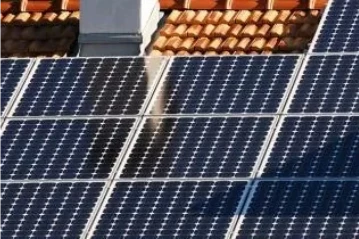
Solar panels are an increasingly popular choice for harnessing clean and renewable energy. With their ability to convert sunlight into electricity, they offer an eco-friendly solution for reducing reliance on traditional power sources. However, the shadow effect can significantly impact the performance and efficiency of solar panels, leading to reduced power generation. In this blog post, we will explore effective strategies to avoid the shadow effect and maximize the output of your solar panel system. Whether you are considering purchasing solar energy products or already own a solar panel installation, these insights will help you optimize your investment and contribute to a sustainable future.
1. Understanding the Impact of the Shadow Effect
Shading on even a small portion of a solar panel can have a substantial impact on its overall performance. In fact, shading on just one cell out of an entire module can lead to a reduction in power output by over 75%. This reduction in power generation can be a significant concern for solar panel owners, affecting the return on investment and long-term energy savings. By being aware of the shadow effect, you can take proactive measures to minimize its impact on your solar panel system.
2. Factors Contributing to Shading
To effectively avoid the shadow effect, it is important to understand the factors that can cause shading on solar panels. Common causes include environmental obstructions such as nearby trees, buildings, and other structures. Self-shading between parallel rows of panels can also occur, particularly in large-scale solar installations. Additionally, accumulated dirt, dust, and debris on the panels can contribute to shading. By identifying and addressing these factors, you can optimize the performance of your solar panel system.
3. Proactive Steps to Avoid the Shadow Effect
a) Positioning of PV Solar Systems:
Before installing solar panels, a thorough site analysis is essential. Consider the position of the sun throughout the day and during different seasons to identify potential shading sources. By choosing a location with minimal shade, you can maximize the exposure of your solar panels to sunlight. Additionally, consider any potential future obstructions, such as tree growth, which could shade your panels over time.
b) Selecting a Shadow-Free Location:
Ensure that your solar panel array is positioned where it will not experience regular shading. Consulting with professional solar system installers can provide valuable insights and utilize mapping tools to accurately identify potential shading issues. By selecting a shadow-free location, you can optimize the performance and efficiency of your solar panel system.
Also Read: Solar Panel Efficiency: A Quick Guide
c) Regular Inspection and Maintenance:
To prevent shading caused by accumulated dirt, dust, and debris, perform regular inspections and maintenance on your solar panels. Clear away any obstructions and clean the panels using recommended methods to ensure maximum sunlight absorption. This proactive approach will help maintain optimal performance and mitigate the impact of shading on your solar panel system.
4. Innovative Solutions to Minimize Shading
a) Bypass Diodes:
Bypass diodes are a crucial component in solar panel systems designed to minimize the impact of shading. These diodes allow the current to bypass shaded or underperforming cells, ensuring that the rest of the system operates efficiently. By incorporating bypass diodes, you can minimize power loss caused by shading and enhance the overall performance of your solar panel system.
b) Advanced Maximum Power Point Tracking (MPPT) Systems:
Implementing an MPPT system can help optimize energy production and mitigate the impact of shading. These intelligent systems dynamically track the maximum power point of the solar panel array, ensuring that it operates at its highest efficiency even in partially shaded conditions. By constantly adjusting the electrical load, MPPT systems help minimize power loss and maximize energy generation.
Ecgsolax's extensive product range includes top-of-the-line MPPT solar charge controllers that ensure optimal performance and efficiency for your solar power systems.
c) Advanced Solar Panel Technologies:
Research and development efforts in the solar industry have led to the introduction of advanced technologies aimed at reducing the impact of shading. For example, "super black" solar cells are designed to absorb a broader range of light wavelengths, making them more efficient even in challenging weather conditions or shaded environments. While these technologies are still in the early stages, they hold great potential for further enhancing solar panel performance.
Conclusion
Avoiding the shadow effect is crucial for maximizing the performance and efficiency of solar panels. By implementing proactive strategies such as careful positioning, regular inspections, and maintenance, you can minimize shading and optimize the energy generation of your solar panel system. Additionally, incorporating bypass diodes and advanced MPPT systems can further enhance performance and mitigate power loss caused by shading. As solar panel technologies continue to advance, innovative solutions like "super black" solar cells offer promising opportunities to overcome shading challenges.
By understanding and addressing the shadow effect, you can make the most of your investment in solar energy products. A well-designed and properly maintained solar panel system will not only provide sustainable and clean energy but also contribute to a greener future for generations to come. Embrace the power of solar energy and join the renewable energy revolution today!


0 comments